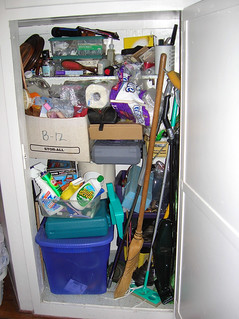
For a lot of us, these last few months have provided an opportunity to clean out and organize our closets, cupboards, garages, and workshops. The process involves resolving to do it (!), clearing everything out, choosing what things we don’t need, and putting the remainder back. In some cases, we also choose to add things that will help us make those spaces more functional.
Stick with me, there will be a point to this.
The culling process involves determining how useful/rewarding the item is (I love the “Does it give you joy?” question.), how long it has been since you last used it, or how truly essential it is.
In some cases things we’ve kept are so inefficient that they need to be replaced. In what must have been the Paleolithic era, I bought one of the world’s first electric screwdrivers. It is almost completely useless because the battery can barely turn a screw even when it’s not going into wood or metal. Maybe I’ll throw it out and get a functional one . . . .
For many arts organizations the retrenchment to zero (or nearly zero) we are experiencing has provided the opportunity for similar consideration of what’s “in our closet.” We can skip right past the “clearing everything out” part of the process. That’s been done for us.
Now, as I suggested in Crisis as Opportunity, we have the luxury (note the extreme distance I’m going to find a silver lining) of examining our programming and business models. Are there assumptions that need re-examining? Would it be worthwhile to think deeply about our role in the community? How about connecting with more people–talking with them, learning about them–so that we can develop better means of making the art we present meaningful to them?
When we are at last able to crawl out from our bunkers, the world will be vastly different. We will be required to take our legally mandated commitment to the “public good” (required by nonprofit status) more seriously and vastly expand the public that sees our work as “good” for them. We will be expected to take issues of justice and equity far more seriously than most of us ever have. We may even have to seriously reconsider our funding models. A shift from a limited number of “big dollar” supporters to a much broader range of small donors may be necessary. (This has been a long time coming, unrelated to the pandemic. Skyrocketing costs and a decline in arts-focused individual, corporate, and foundation sources have been conspiring to upend our business models.)
In short, we will need to build close working relationships with more and more of the communities that surround us. We will need to, yes, engage with them.
Not every item needs to go back in the closet. Are there things that are, metaphorically, like my electric screwdriver? The fact that you’ve always done something does not mean it is a good fit for the new world that’s coming.
Let me urge you to consider replacing some of the things in your closet. If you have not done so already in this harrowing time for the arts, think about what relationship building might look like for your organization and what opportunities there might be for doing your art in ways that a more meaningful to those you need to serve.
And if you have a difficult time imagining these things, remember there are those of us who would be happy to give you a hand in doing so.
Engage!
Doug
Photo:


Very thought-provoking and something that I have been trying to address with my organization for the past few months.